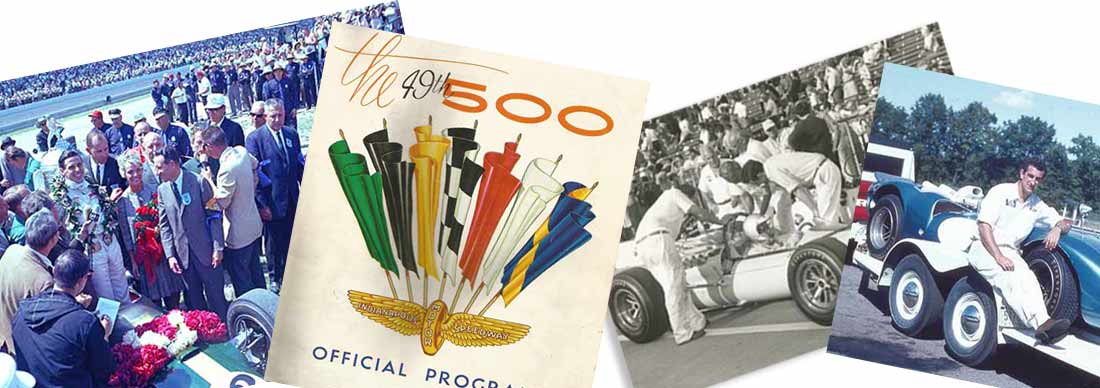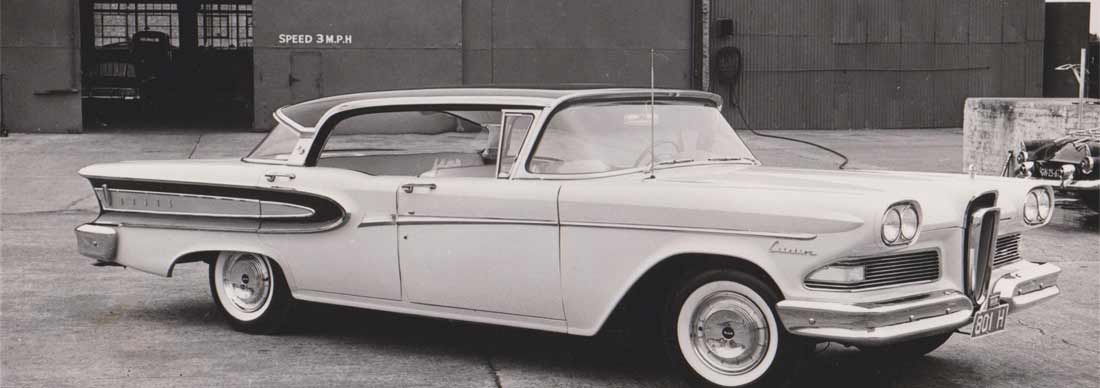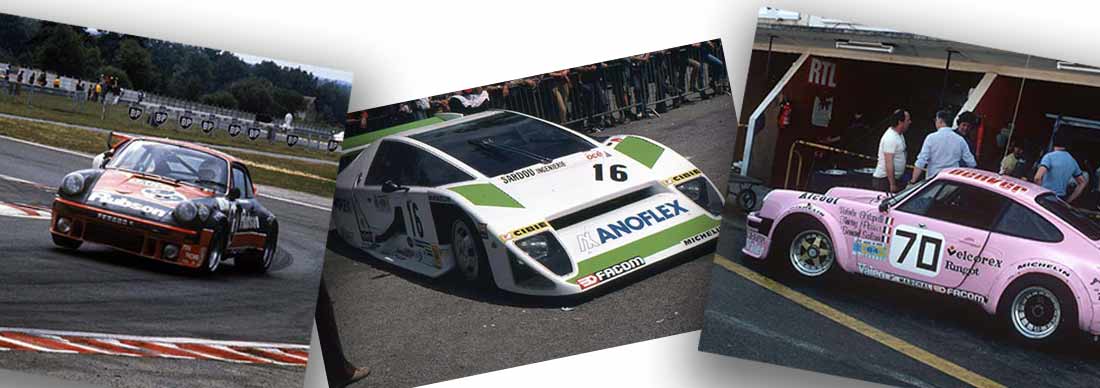
BRP's Indianapolis Swan Song - Part 4

Monday, May 31, 1965 was a beautiful day. The temperature was in the high 70s, the sky was almost clear and there was just a faint breeze. Indianapolis owner, Tony Hulman issued his familiar command, ‘Gentlemen, start your engines’. Thirty-one cars immediately fired up, one of the two not to do so was Gregory’s BRP. As the field moved off for the parade lap, he was still stationary but then his Ford V8 engine roared into life and he and Billy Foster, who should have been starting from the second row, chased after the pack. The Kansan was now on a mission.

Above: The official programme for the 1965 Indianapolis 500, showing the two ‘George Bryant & Staff Specials’.
‘When the flag dropped, the commentator seemed to be concentrating on Masten all the time. He was going through the field like a knife,’ says BRP mechanic George Woodward. Autosport’s reporter Skip Lange wrote, ‘Coming through like gangbusters from the back of the pack was Masten Gregory.’ With 10 laps gone, he was up to 11th position.

Above: The bespectacled Masten Gregory in the pits. (Courtesy George Woodward)
Up at the front, history was being made. George Woodward still takes delight in the fact that from the fall of the flag, ‘Jimmy Clark ran off from the field and they never saw him again.’ In the run-up to the race, AJ Foyt had been telling George that he would blow his fellow Brit ‘out of the track’. It has to be confessed that Foyt did enjoy a few laps in the lead but not many and only those when Clark pitted before him. Foyt eventually retired with a damaged gearbox, while Clark sailed on to win by two laps in his Lotus. It was the first Indy win for a British-built car, although there were others that day who showed that the machines from England meant business.

Above: The great Jim Clark simply ran away from the field in 1965. (Indianapolis Motor Speedway)
By the time he had made his first, and what was to be only, fuel stop, Masten was up to fifth in his BRP, having pulled himself up from the rear rank of the grid, thanks partially to that five-speed gearbox. On about the 55th lap, Gregory brought his car into the pits for refuelling. Woodward recalls that only five mechanics were allowed ‘over the wall’, three of whom were involved in the refuelling. A Firestone representative was also present but, unlike today, only just the two offside tyres would be changed during the entire race. ‘They used to say that you could run a three-wheel car at Indy if it was not for the straights,’ quips Woodward. Seventy-five gallons were poured in through two four-inch hoses. ‘We had a big strong guy to run round the car,’ says Woodward, whose job was to earth the car at the back. The stop took, he remembers, around 15 to 17 seconds.
In the event, a few laps later, Gregory’s car melted a piston. ‘Whoever had set the carburration had set it too weak.’ The press reported the car’s demise: ‘Little puffs of smoke from Masten Gregory’s BRP-Ford, herald the end of his noteworthy effort,’ said Car and Driver magazine. Rookie Gregory was classified 23rd having completed 59 laps. Autosport’s Lange wrote, ‘Masten Gregory, who had moved up smartly, smoked into the pits, made a slow exit, returned to the pits and was experiencing the problems that retired his car at this point.’
Perhaps it should be left to the report in Competition Press & Auto Week to sum up Gregory’s endeavour: ‘Masten Gregory finally got himself a decent car for the race and put [up] one of the few really dazzling displays of driving in the entire event. Starting in the last row – and barely getting his BRP-Ford started off the grid at that – Masten went flat out from the second the flag dropped. He passed nearly a dozen rivals before he crossed the starting line and proceeded to tussle his way up to sixth place before his engine went up in smoke on the 59th lap. But oh boy, he was great while he lasted.’
By contrast, Johnny Boyd’s car was not in any contention. Eventually gearbox troubles set in and he retired after 140 laps. The result was 13th place.
The performance of Gregory’s car needs dwelling upon. The BRP, which had been designed and built by a team with zero experience of Indianapolis, indeed had never seen the inside of the Speedway, ran as high as fifth. Masten’s performance, the quality of the cars and the speed with which they were built, by men who knew nothing about oval racing, underlined what the team at BRP was capable of.
The race over, Woodward and Jim Chapman ‘had a few beers’ and returned to their apartment. ‘Both of us just fell on our beds and that was it. We missed the prize presentation.’
After the race, George Bryant invited Woodward and Chapman to his house in New York. ‘We stayed there the weekend. He took us on the ferry round the (Staten) island and showed us the sights of the city. Masten Gregory, who had gone with them, said that he had a meeting scheduled with Luigi Chinetti, who ran the North American Racing Team (NART) and for whom he was signed up to drive at Le Mans. Masten invited the two mechanics to join him at the lunch. ‘Chinetti took us to an obviously Italian restaurant. You could just imagine being on the set of “The Godfather”.’
Woodward and Chapman were asked what they were now doing. ‘We’re absolutely knackered, we’re going back home and we’re not going to do anything for a month,’ was the reply. Nevertheless, they were invited to accompany NART for Le Mans. ‘I reckoned that we had had enough experience of Le Mans but Chinetti said that, although he was prepared to pay us, he did not want us to do any real work there. They had a Ferrari factory team to do that. All he wanted us to do was run the signalling pit. The previous year they had used three college students to do this and they had all fallen asleep. We agreed, organised the signalling and just watched the mechanics at work. The beauty of it was that they got Jochen Rindt as a second driver for Masten’s 250LM and they won.’
At Le Mans, John Surtees said that Eric Broadley had asked him to have a word with Chapman and Woodward. The Lola founder had signed a contract with John Mecom to run an Indy car and wanted to talk to them about it. The result was, with BRP now being in the past, the duo returned to the USA. At the 1966 Indianapolis 500, George was crew chief on Graham Hill’s Lola, while Jim looked after Jackie Stewart’s. With eight laps to go, the Scot was a lap in the lead. Then an oil scavage pump broke on this car and either Hill or Lotus driver Jim Clark swept into the lead. There was controversy about which one it actually was but the timekeepers decided that it was Woodward’s charge who was in front and the eventual winner.

Above: The following year, George Woodward crewed the winning Lola of fellow Englishman, Graham Hill. (Lola Cars)

Above: Jim Chapman remained in the USA, becoming a significant figure in the motor sport scene there. (Courtesy Jim Chapman)
George and Jim had certainly arrived at the Brickyard and the following year ‘their’ car, driven by Al Unser, came second in the 500. They would continue to work on the Lola Indy cars until 1970 before setting up ChapWard Racing in the USA. Their association with BRP had led them to a whole new continent and while George returned to the UK in 1974, Jim continued to work in American motor sport for many years, eventually retiring to live in Montana. Woodward recalls that Williams Grand Prix Engineering co-founder Sir Patrick Head, who started his career at Lola, would later say that ‘he learnt more about motor racing from Jim and myself than anyone else’.
Cars Illustrated predicted earlier, at the time the two BRPs were being built, that Tony Robinson, having tied up any loose ends once they had been finished, would if necessary go to Indianapolis himself towards the end of the May. While he was there he would, in the words of the magazine, ‘scout round with Ken Gregory [and] assess the market for further cars of this type’. The cost for one of the quality-built chassis would have around £6,000, plus engine and gearbox. In the event, neither was to go. ‘You’ll have a dozen?’ asked Cars Illustrated. Nobody answered. It did not happen for BRP but the market was certainly to open up for other British manufacturers in the forthcoming years.
Thus, BRP’s own involvement with its Indy creations only concerned 1965. While George Woodward and Jim Chapman were able to forge out new careers in the USA as a result of the Indy project, Tony Robinson’s involvement with Indy car racing was over. At one stage in 1966, it looked as if this might not be the case. Innes Ireland had hired wealthy car owner Bernard White’s BRM P261 for the US and Mexican Grands Prix that year and had asked Robinson if he would run the car. Tony got to know White on that trip to the USA, a result of this being that the larger-than-life White asked him to quote for a three-car entry for Indianapolis the following year. Robinson painstakingly worked out the costs, which he presented to White. Tony was about to stay with friends in Jamaica for a few days between the two races and he gave White a telephone number in Kingston to contact him on. He said that he looked forward to discussing ‘the project further’ but it was the last he heard from White on the matter.
The final Indy possibility for Robinson came with Jack Brabham, Cooper’s pioneer driver at the Speedway in 1961. Jack had entered one of his own cars for the 500 in 1964, 1965 and 1966. Preparing to enter a pair of cars for the 1968 race, Brabham and his design partner Ron Taurenac approached Tony to see if he would work with them on their construction. Robinson agreed, Brabham bought him a Ford Anglia company car and he joined up…but only for a couple of months. Their car would be a monocoque and it was felt that Robinson’s experience was needed. Unfortunately, Tony found the abrasive Taurenac difficult to work with. It was not for him and he walked out.
Books by Ian Wagstaff
Other articles by Ian:
BRP’s Indianapolis Swan Song - Part 1
BRP’s Indianapolis Swan Song - Part 2
BRP's Indianapolis Swan Song - Part 3
BRP's Indianapolis Swan Song - Part 5






Leave a comment
This site is protected by hCaptcha and the hCaptcha Privacy Policy and Terms of Service apply.